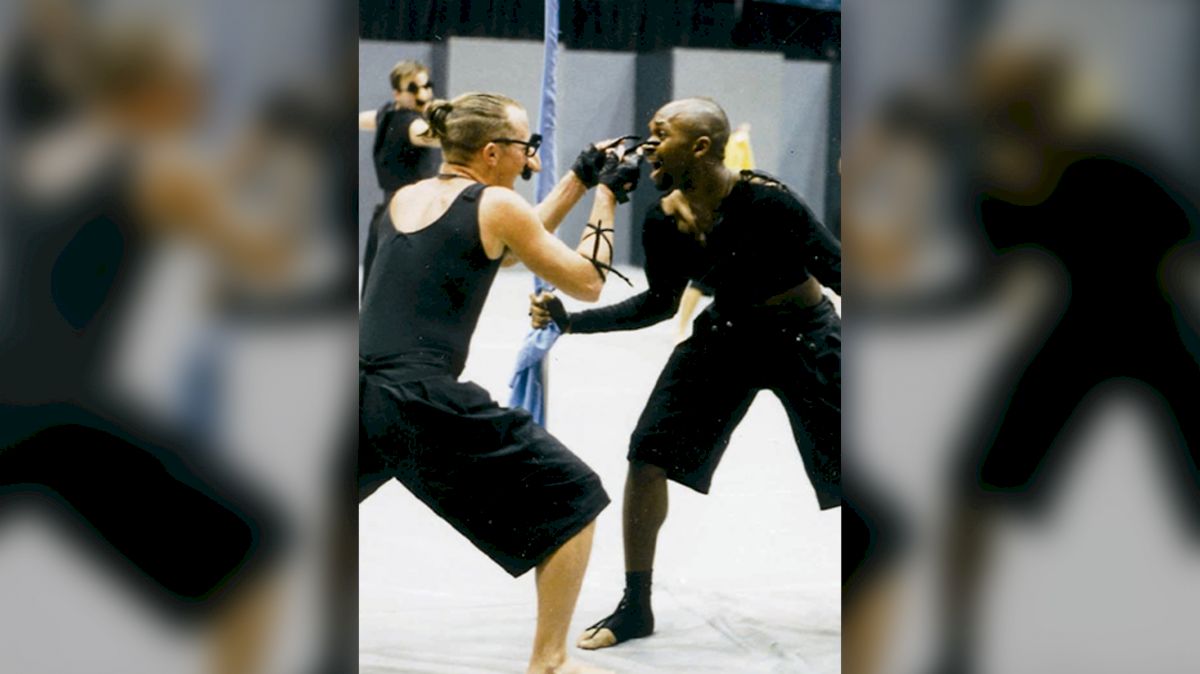Escapade 1995: Looking Back On WGI's Most Influential Shows Of All Time
Escapade 1995: Looking Back On WGI's Most Influential Shows Of All Time
Let's take a look back in WGI history to when Escapade "aged-out" in 1995.

Unlock this article, live events, and more with a subscription!
Already a subscriber? Log In
Groundbreaking shows are not always the ones that finish first, but they always have a lasting impact on the direction of the sport many years after their final performance.
In this ongoing series, FloMarching has asked one of color guard's top experts, Courtney Allyson Mills, to take a look back at some of WGI's most influential shows.
Allyson Mills has taught color guard and dance at over 150 high schools and universities. A two-time WGI gold medalist with The Company and a DCI finalist with Carolina Crown, she is also the founder and facilitator of ColorguardEDU.
Escapade 1995
The 1995 season was the last year of existence for Escapade, a winter guard known for its rock-star-style shows and equally rock-star performers. Escapade shows were exciting, sexy, and flawlessly clean. When they announced that 1995 would be their “age-out” year, everyone in the activity was so interested to see what kind of show would be their last.
“Hydrogen Jukebox” was a departure from what Escapade had performed in years before. In lieu of an upbeat rock song, the quirky sounds of Phillip Glass’ “Hydrogen Jukebox” filled the arena. Instead of masculine and feminine gender roles, which were very much a part of Escapade's identity, the show provided gender neutrality. Perhaps the most impressive thing 1995 Escapade achieved was a completely different persona, complete with Groucho Marx masks.
The show brought an extremely intelligent sense of humor to the floor. The very first flag is used for exactly two counts of flag work (up and over), by the majority of the cast. The flag has the word “Ah” written on on it and lines up musically to a vocal cue of “Ah.” After that two-count flag feature, everyone leaves the space and an incredibly modern movement moment takes over.
The choreographic choices within this show set a precedent in winter guard for years to come. Stylistically, a freedom emerged in the bodies of the performers. The movement qualities continually shifted from free to bound and quick to slow in a matter of seconds, and the technique of it all was consistent across the board. Every single performer on the floor looks as if he or she has mastered this technique; however, they each have the freedom to work within their own bodies to achieve what they have been asked to do.
When the rifles make their entrance, coming from the back of the floor, no one expects what happens next. As the rifle line dips for a left-handed toss, the outcome of a release is expected. However, a toss is not what happened. Instead, on the release, the rifle came apart into two pieces and choreography with both pieces ensued. A collective smirk filled the audience, as we realize the brilliance happening in front of us.
There are a variety of details that make this show a game-changer for the color guard activity, but the intellectual maturity of the design was the thing that took it over the top. Escapade 1995 created an atmosphere that begged its audience to go on a brainy, yet incredibly fun, journey with them as they brought a question to the color guard activity as a whole: Why not?
Why not take a risk with a sense of humor? Why not try new ideas with traditional equipment? Why not move in a way that gives everyone individuality, personality, and ownership? Why not create gender neutrality within our program and see where that takes us?
Why not take a chance?